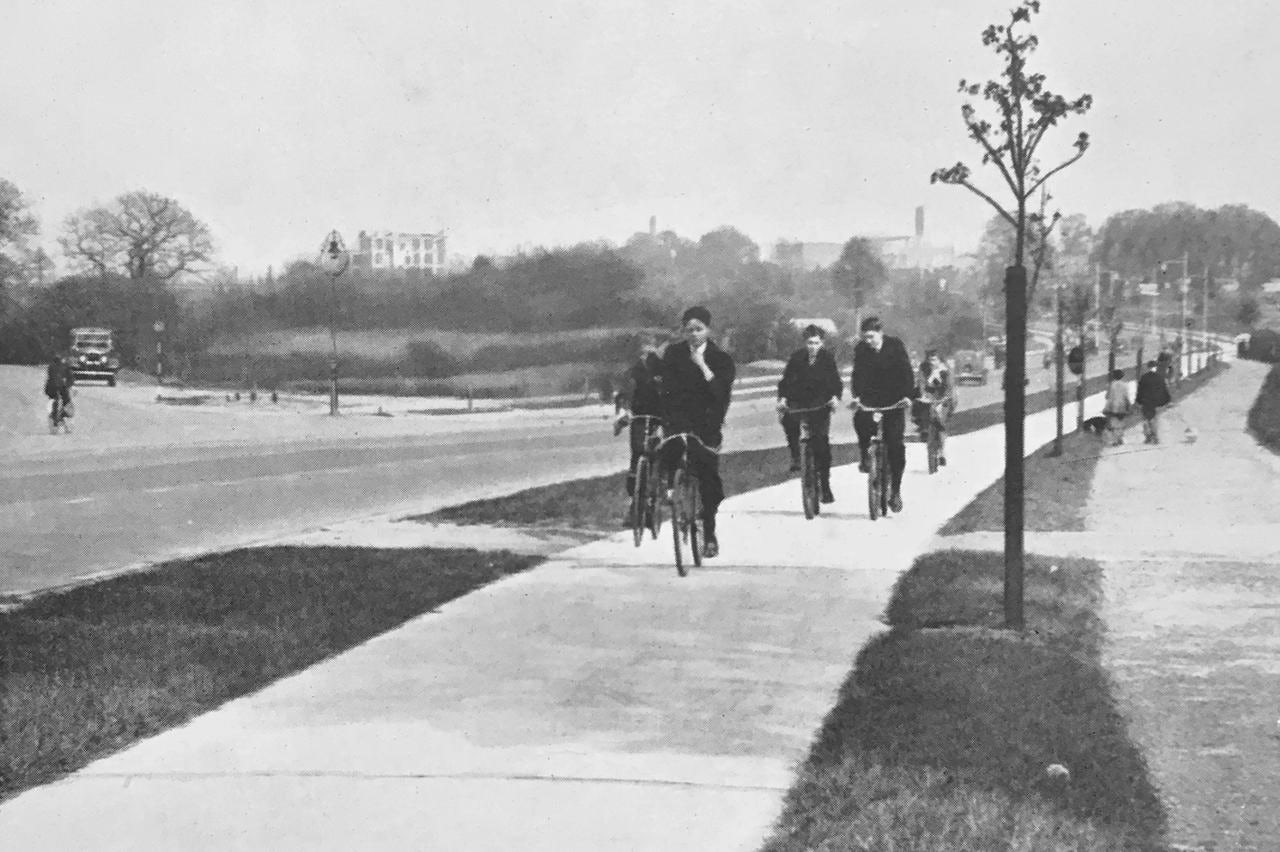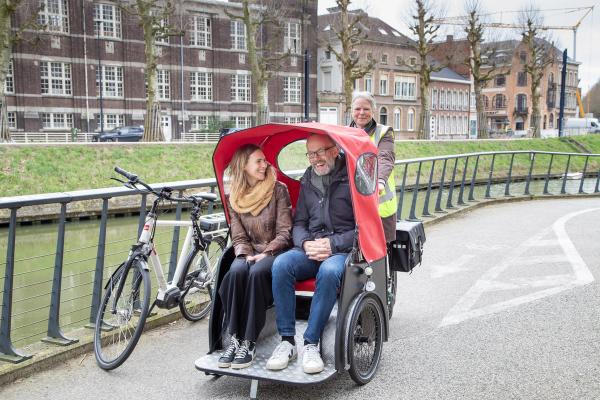How bike lanes sidelined cyclists: unearthing 190 miles of 1930s cycle lanes
Carlton Reid has found a forgotten network of bike lanes, along with a dark history of elitism
James Howell-Jones
Junior Writer
© National Archive
Cyclists use a typical cycle lane in the 1930s
Journalist, author and historian Carlton Reid recently published research that revealed that hundreds of miles of bicycle lanes were built in Britain in the 1930s. After extensive surveying and planning, some of these historic routes are set to be rebuilt in the coming years as part of an ambitious infrastructure project.
At first glance, the discovery of these cycle lanes points to a ‘golden age’ of cycling, in which the government stepped in to support the millions of people who were using a bike to get from A to B.
However, as Reid explained in a recent call with GCN, these bike lanes were not a celebration of cycling, but a calculated effort to clear the roads of working-class cyclists. Millions of working-class people had started cycling in the 1930s, and the ruling classes, who preferred expensive motorcars, wanted them out of their way. These bike lanes were a way of marginalising cyclists, and freeing up Britain’s expansive road network for the small number of wealthy car owners.
Now, almost a century on, these same lanes that were built, as Reid puts it, “to get rid of cyclists”, could become the reason people choose to travel by bike. With road safety the number one reason most people don’t cycle, and with congestion showing no signs of improving, these wide, safe cycle lanes from the 1930s have the potential to open up dozens of towns around the UK to new cyclists.
Cycling boom in the 1930s
“We had the bike boom in COVID, and we think that's big, but it’s nothing compared to the 1930s,” explains Reid.
“Cycling was much, much bigger than we've given it credit for. It was the largest form of transport at the time. Industry estimates and government estimates have it between 10 and 12 million cyclists. At the time there were less than two million motorists. Cycling was huge!”
The cycling boom was driven by the fact that in the 1930s, bikes became cheap enough for most people to buy for the first time.
“Bicycles were relatively expensive in 1910, 1915, 1920,” says Reid. “Cycling was for the elite of society, royalty, middle classes. It was a bourgeoisie thing to do. It was very expensive.”
Slowly, as bicycles became more numerous and easier to build, their price fell. By the 1930s, virtually anybody could afford a bike, and in 1936, the Ministry of Transport’s census data showed an “extraordinary increase” in cycling, noting that participation increased between 169% and 388% from 1931 to 1935.
This raised issues for the upper and middle classes, who by this time had ditched their bicycles in favour of motorcars.
“They wanted working class people to get off the roads so they could do 80 miles an hour in their cars. There was a very small number of motorists at the time, and they were all elites. They were police chief constables, MPs, royalty. It was a very small number of people.
“So there was a huge number of people cycling, and a tiny number of people motoring. Yet the government was building this infrastructure [the new network of A-roads] for this tiny, tiny number of their class. So I very much treat this as a class thing, not just cyclists versus motorists. This is the elite versus the working class here.”
Under the guise of improving safety for cyclists, the government decided to build cycle tracks alongside most major roads.
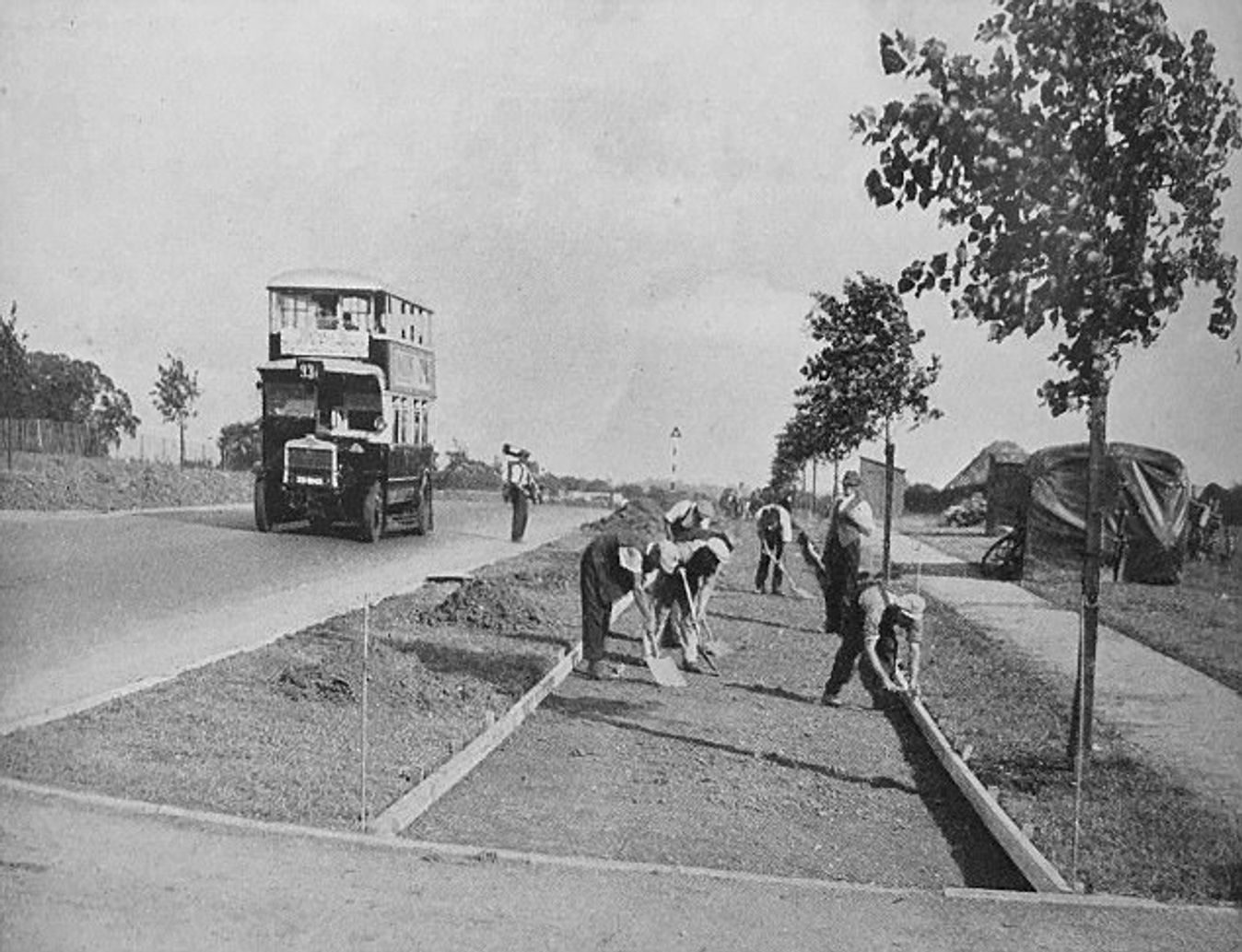
© National Archives
A complete network of 'cycle tracks' under construction
“Ostensibly they wanted to protect cyclists — that's what they said. But if you actually look behind the scenes of what mandarins and ministers and MPs were saying, basically, they wanted to get rid of cyclists.
“The Ministry of Transport officials were writing to each other and writing to ministers saying how worried they were about this explosion in cycle use.”
“And if they gave them small bits of infrastructure, they knew if they were then forced to use that infrastructure, they would get fewer cyclists. So in public, they would say, ‘We're doing this for safety.’ Behind the scenes, they were doing it to get rid of cyclists.”
Cyclists at the time knew exactly what was going on. They pushed back against the new lanes.
“The organised cyclists of the time didn’t want anything to do with them,” explains Reid. “Because they had the dual carriageways to themselves.”
Clearing the road of cyclists was part of a holistic plan to put cars front and centre, even though most people didn’t own one. In a committee intended to prevent traffic accidents in 1938, one Admiral said:
“We think that a certain amount of propaganda could be usefully used in making ordinary people who do not own motor-cars realise how much they owe to motor traffic.”
This episode was part of the process of car-centricity that took hold in the 20th century. Following a range of changes to make car usage easier and cheaper, the car replaced the bicycle. After WWII, bicycle usage dropped off a cliff, and there was no need for bike lanes to clear the roads of cyclists: there was simply hardly anyone riding a bike.
Read more: 'Cycling in the UK peaked 75 years ago' – New report highlights funding neglect
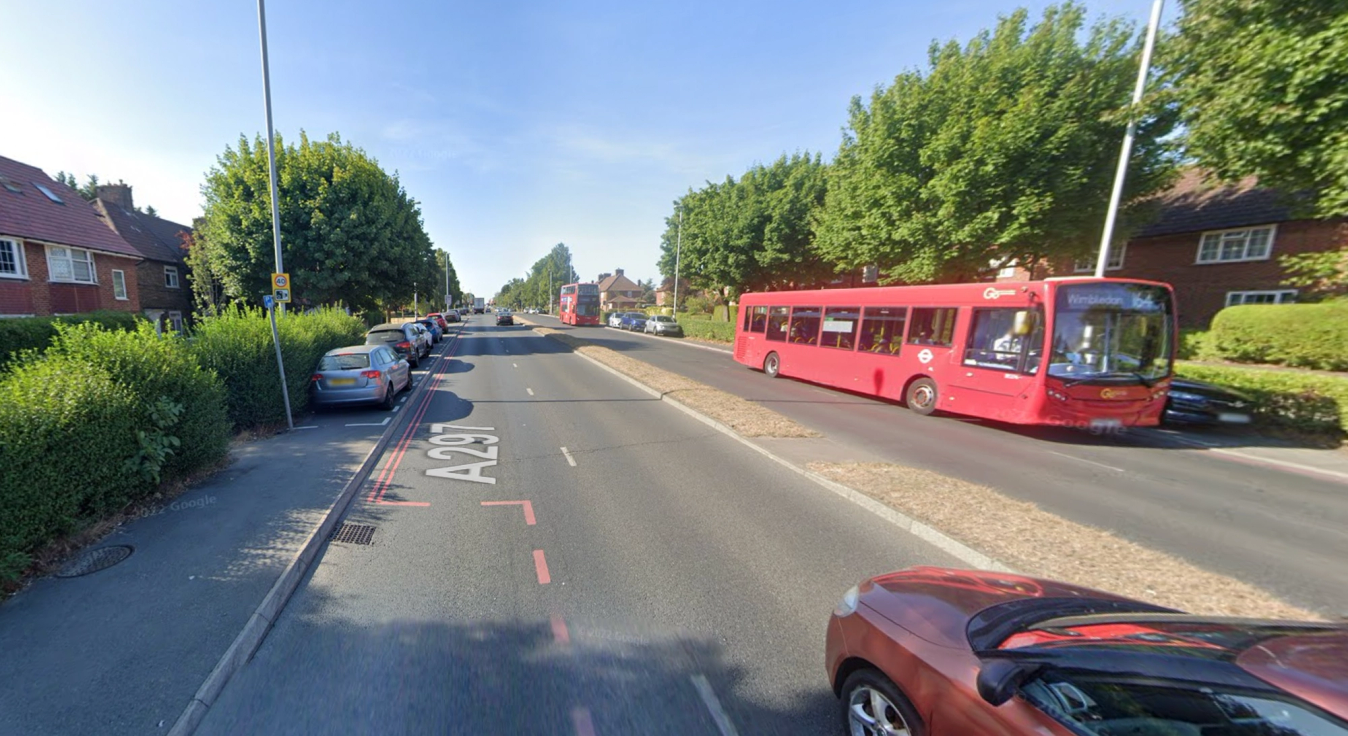
© Google Street View
As shown here, in many cases, the bike lanes were converted to parking spaces
Recovering the cycle lanes
Fast forward to today, those lanes built to discourage cycling could lead to greater participation.
“The project does have this duality about it,” Reid explains. “Because on the one hand, it says this was a class thing; a ‘getting rid of cyclists’ thing. Yet we should be saving these tracks because they're actually quite useful, but they're only useful because we've had a saturation event with motorists.”
Nowadays, the car looks less like the transportation method of the future, and more like a relic of the 20th century: they cause pollution and casualties, and take up far too much space. The bicycle meanwhile, is having a renaissance. It’s part of the EU’s vision of the future, and around the world, planners are realising that the humble bicycle could be the answer to a whole load of health, safety and emissions problems.
In that context, these lost 1930s bike lanes could be more important than ever. Recent research indicates that more bike lanes means more people ride a bike, but with resources for bicycle infrastructure always limited, authorities need all the help they can get to build the complete network that we need around the UK.
Subsequently, the 1930s bike lanes discovered by Reid are now being reenlisted to get more people riding bicycles. After crowdfunding his research into lost bicycle lanes, Reid was awarded government funding to prepare a select few of them to be brought back to life.
“The Department of Transport paid just under £100,000 to get me to do the history, and most of the money went to a design company to take 12 of these routes, the best of the routes, the ones that you could rescue, and to do modern engineering drawings.”
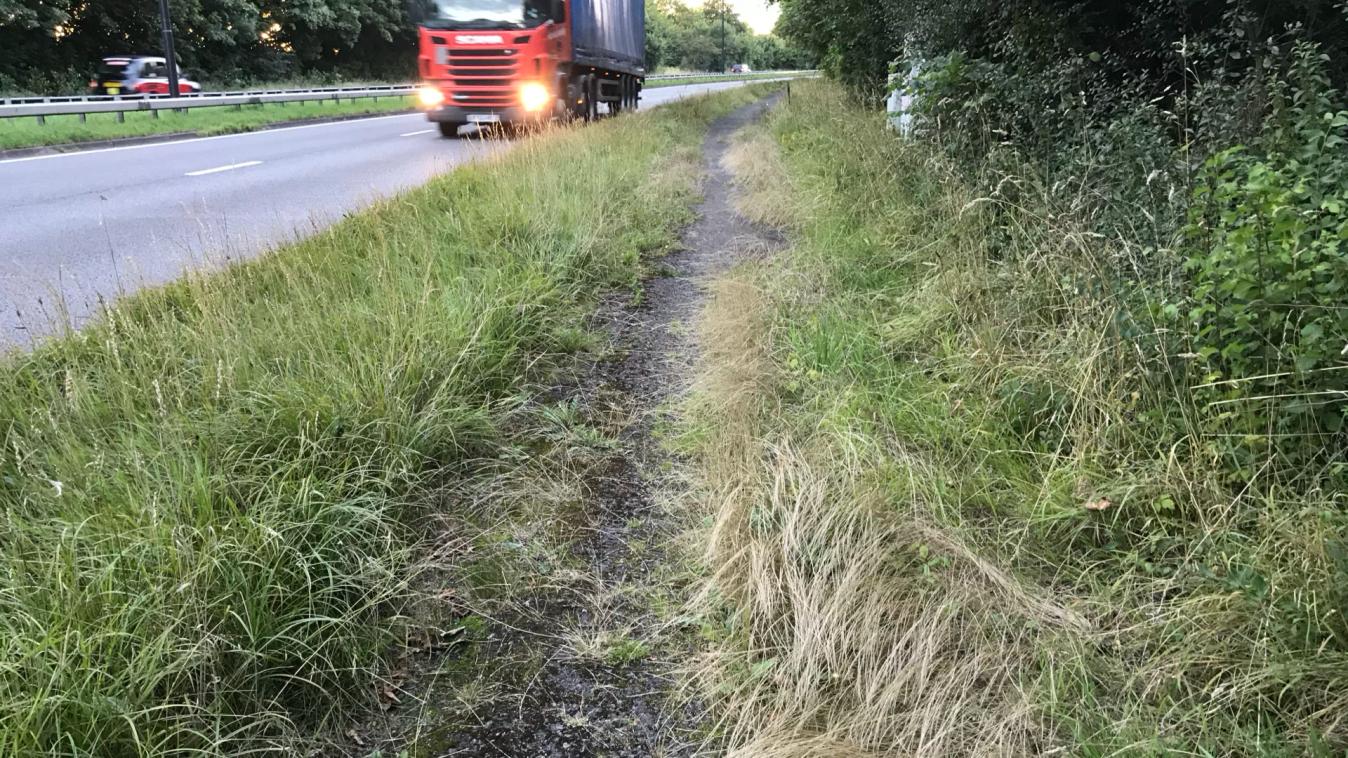
© Carlton Reid
A typical 1930s cycle lane today: overgrown, degraded, unusable
The result is twelve cycle tracks that are ready to be resurfaced and opened to the public.
Although most are still awaiting implementation, one of the lanes is under construction already:
“Leicester used those engineering drawings as their bid for £2.2 million for two cycleways. One of them is a 1930s one. So they're actually starting to build and refurb it now. In the next seven months, it should be finished.”
As for the remainder of the lanes, Reid doesn’t expect anything to change until the local elections are out of the way.
“Everything has now been dialled back because it's the elections coming up, but after the election, it would be good for local authorities to use these plans, which have been drawn up at great expense, to then put their bids in.”
“We had to choose 12 just as a good round number, I reckon there's probably 15 to 20 that you could probably make into really decent routes today.”
Exactly how many more bike lanes lie dormant under grass verges is unknown, but by comparing various accounts, Reid has concluded that around 500 miles (805km) of bicycle tracks were built. So far, he has found 190 miles (306km), partly by checking satellite imagery on 1930s-era roads, and partly by delving into newspaper records and highways meeting minutes. One road at a time, he is uncovering this network of cycle tracks.
Reid’s project to uncover dormant cycle tracks around the UK has unveiled a difficult narrative that gives us an insight into the class dynamic that led to our car-centric culture. However, whatever the history of these paths may be, they have the potential to be renovated into safe cycling infrastructure at a relatively low cost. Although upcoming local elections have thrown most of those projects on ice for now, Reid has provided a head start to building better bicycle infrastructure, something that most of the UK is crying out for.
For more of the latest on cycling infrastructure, visit our general news page. For more interviews like this one, visit our lifestyle interviews page.
